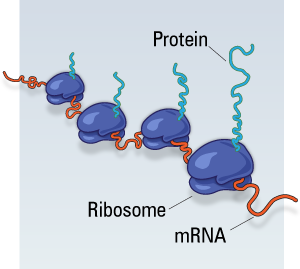Photosynthetic pigments are present in thylakoids of chloroplast and helps in the absorption of light during photosynthesis. Therefore, photosynthetic pigments are very important for the process of photosynthesis. There are two types of pigments present in green plants -
i) Chlorophylls
ii) Carotenoids
i) Chlorophylls:- These are green pigments mainly involved in the conversion of light energy into chemical energy ( formation of glucose). There are five types of chlorophyll pigments are present in plants. These are chlorophyll a, b, c, d and e. Chlorophyll a and b are present in higher plants. Chlorophyll a is present in all types of photosynthetic organisms except bacteria ( This pigments is found in all oxygen evolving photosythetic plants). Hence, It is named as universal chlorophyll pigment. Chlorophyll a directly takes part in photochemical reactions. Therefore, it is also known as the primary photosythetic pigmen. Other photosynthetic pigments including chlorophyll b, c, d, e, carotenoids and phycobilins are called accessory pigments because they are not diectly involved in photochemical reactions and can absorb the light of different wavelengths and transfer energy finally to chlorophyll a through electron spin resonance.
The empirical formula of chlorophyll a is C55H72O5N4Mg and it differs from Chlorophyll b by one methyl group (-CH3) and chlorophyll b will have aldehyde group (-CHO) Therefore, chlorophyll b's empirical formula is C55H70O6N4Mg. The empirical formula for bacteriochlorophyll is C55H74O6N4Mg.
Structure of chlorophyll molecule was studied by Wilstatter, Stroll and Fischer in 1912. Each chlorophyll molecule have a tadpole like configuration consists of porphyrin head and phytol tail. The porphyrin head is made up of four pyrrol rings and interconnected by methane group. In the center of pyrrol rings divalent Mg is present. The phytol tail consists of 20 carbon long chain.

i) Chlorophylls
ii) Carotenoids
i) Chlorophylls:- These are green pigments mainly involved in the conversion of light energy into chemical energy ( formation of glucose). There are five types of chlorophyll pigments are present in plants. These are chlorophyll a, b, c, d and e. Chlorophyll a and b are present in higher plants. Chlorophyll a is present in all types of photosynthetic organisms except bacteria ( This pigments is found in all oxygen evolving photosythetic plants). Hence, It is named as universal chlorophyll pigment. Chlorophyll a directly takes part in photochemical reactions. Therefore, it is also known as the primary photosythetic pigmen. Other photosynthetic pigments including chlorophyll b, c, d, e, carotenoids and phycobilins are called accessory pigments because they are not diectly involved in photochemical reactions and can absorb the light of different wavelengths and transfer energy finally to chlorophyll a through electron spin resonance.
The empirical formula of chlorophyll a is C55H72O5N4Mg and it differs from Chlorophyll b by one methyl group (-CH3) and chlorophyll b will have aldehyde group (-CHO) Therefore, chlorophyll b's empirical formula is C55H70O6N4Mg. The empirical formula for bacteriochlorophyll is C55H74O6N4Mg.
Structure of chlorophyll molecule was studied by Wilstatter, Stroll and Fischer in 1912. Each chlorophyll molecule have a tadpole like configuration consists of porphyrin head and phytol tail. The porphyrin head is made up of four pyrrol rings and interconnected by methane group. In the center of pyrrol rings divalent Mg is present. The phytol tail consists of 20 carbon long chain.
Carotenoids:- carotenoids are yellow, brown, orange or reddish pigments found in photosynthesizing cells. The carotenoids also provide colour to the fruits and flowers because they are present in the chromoplasts. These different colours of flowers will attract the insects and pollination will takes place. ( Pollination is the transfer of the pollen grain from anther to stigma ). Carotenoids are of two types:-
a) Carotenes
b) Xanthophylls
a) Carotenes:- These are unsaturated hydrocarbons with general formula of C40H56. The most common carotene is beta carotene present in good amount in carrot which is converted into vitamin A by liver in animals and human beings.
b) Xanthophylls:- These are Zeaxanthin and Lutein. lutein is responsible for yellow colour in autumn foliage.

.jpg)